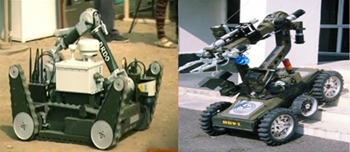INDIAN ARMED FORCES CHIEFS ON OUR RELENTLESS AND FOCUSED PUBLISHING EFFORTS

The insightful articles, inspiring narrations and analytical perspectives presented by the Editorial Team, establish an alluring connect with the reader. My compliments and best wishes to SP Guide Publications.

"Over the past 60 years, the growth of SP Guide Publications has mirrored the rising stature of Indian Navy. Its well-researched and informative magazines on Defence and Aerospace sector have served to shape an educated opinion of our military personnel, policy makers and the public alike. I wish SP's Publication team continued success, fair winds and following seas in all future endeavour!"

Since, its inception in 1964, SP Guide Publications has consistently demonstrated commitment to high-quality journalism in the aerospace and defence sectors, earning a well-deserved reputation as Asia's largest media house in this domain. I wish SP Guide Publications continued success in its pursuit of excellence.
Policy on Unmanned Vehicles – setting course is good
 |
By Lt. General P.C. Katoch (Retd) Former Director General of Information Systems, Indian Army |

DRDO Director General Dr S Christopher's statement on February 11, 2017 that DRDO plans to soon come out with policy document on unmanned vehicles capability is a good initiative, even as this should have happened a decade earlier. Speaking at Bengaluru during the curtain raiser of the Aero India Aerospace Exposition, he acknowledged that unmanned vehicles are going to be the order of the day and said that DRDO is making a policy document 2020 on what unmanned capability should be provided to the defence services. He also highlighted the following: marriage of software expertise and the production capability of companies supported by 'Make in India' unmanned vehicles needs to be created; need to develop unmanned vehicles for air, ground and underwater; and, exhibition-cum- competition planned on unmanned vehicles for students to harness knowledge in this regard. With regard to the newly created Technology Development Fund under which private firms can be supported up to 10 crore, willing to work on the requirement floated by DRDO for designing and developing a new idea, he said most of them who are coming up for this are in the unmanned area. What the DRDO must do is work out this policy in close consultation with the Armed Forces and not independently; developing products and then go hunting to find where they can fit into the security sector. What is needed is to closely study how unmanned vehicles are currently being used by foreign militaries, what are their future plans, ongoing trends and research, and then define the Unmanned Vehicles Policy 2020.
Given the ability and initiative shown by our IIT and youth of schools and colleges, there is no reason that we cannot be a world class in unmanned vehicles. In 2015, a team of students at IIT Kharagpur had developed prototype of an ultra-modern autonomous underwater vehicle (AUV) that can defy the current standard of manually operated drones. Named Kraken 3.0, it is be capable of conducting underwater surveillance, repair large underwater pipes and even help in finding and retrieving black box of an aircraft that crashes or is downed at sea. In January 2017 during 'Vibrant Gujarat Summit', 14-year old wonder boy Harshwardhan Zala, Class 10 student of Sarvoday Vidhyamandir in Bapunagar, signed a 5 crore memorandum of understanding (MoU) with Gujarat Government for productionizing an 'Aerial Mine Detector-Neutralizer Drone' designed by him; the robot will help detect and neutralize land mines on the battlefields. Wired to locate and destroy, the drone is equipped with infrared, RGB sensor and thermal meter along with a 21-megapixel camera with a mechanical shutter that can take high resolution pictures. The drone is designed to send out waves that cover eight square metres while flying two feet above the surface; the waves detect land mines and communicate their location with a base station. The drone also carries a bomb weighing 50 gram that can be used to destroy the landmine. Then, after two years of extensive research a group of scientists of Research and Development Establishment (Engineers) of the DRDO has developed two new robots capable of detecting and defusing improvised explosive devices on aircraft and trains; 'Dakshin Mini' and 'Daksh Scout', both of which being light are easy to transport and use in any situation.
The two new robots are continuation of the Daksh robot series. Daksh Mini is a remotely operated vehicle capable of detecting, handling and defusing IEDs and other suspect objects. Daksh Mini is equipped with six axis telescopic manipulator arm with high resolution cameras and its modular flipper-based design enables it to overcome obstacles and climb stairs. Daksh Scout robot is also a remotely operated vehicle, which can be operated from a distance of 200 meters, and is capable of silent surveillance by day and night. It is portable and capable of being deployed in cross country areas and confined spaces like within culverts. Youth innovations are going global. In neighbouring Afghanistan, two Afghan brothers (Massoud and Mahmud Hassani) having relocated to Netherlands, have developed a mine hunting drone called 'Mine Kafon' (kafon means "explode" in Dari). The Mine Kafon operates in three phases uses separate robotic attachments: one, 'Mapper' - using a 3-D camera, GPS, and a computer, the drone maps the terrain, turning any given area into a precise grid; two, 'Detector' - sensors and a retractable arm keep the metal detector 1.5 inches above the ground as it geotags mine locations; and three, 'Detonator' - a gripper arm places a small, explosive detonator onto each mine. The drone then triggers the explosives remotely. DRDO intitiative of defining a policy up to 2020 for unmanned vehicles will set the course for next few years but concurrently, the Government must task the private industry separately, which will spur competition, accelerating research and development.





